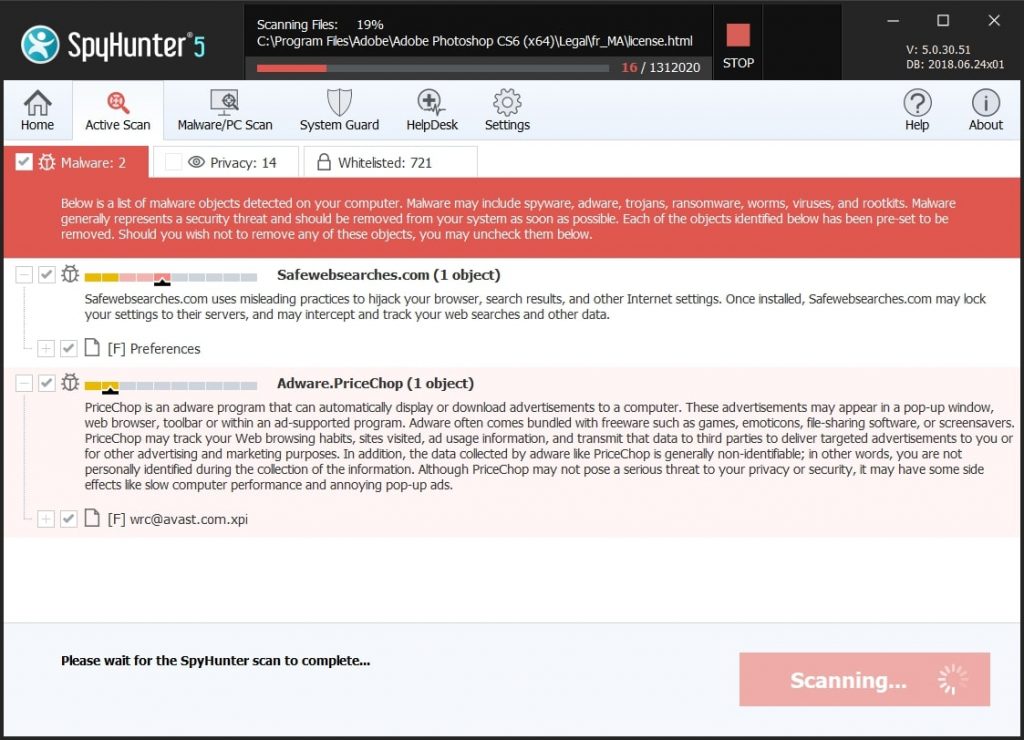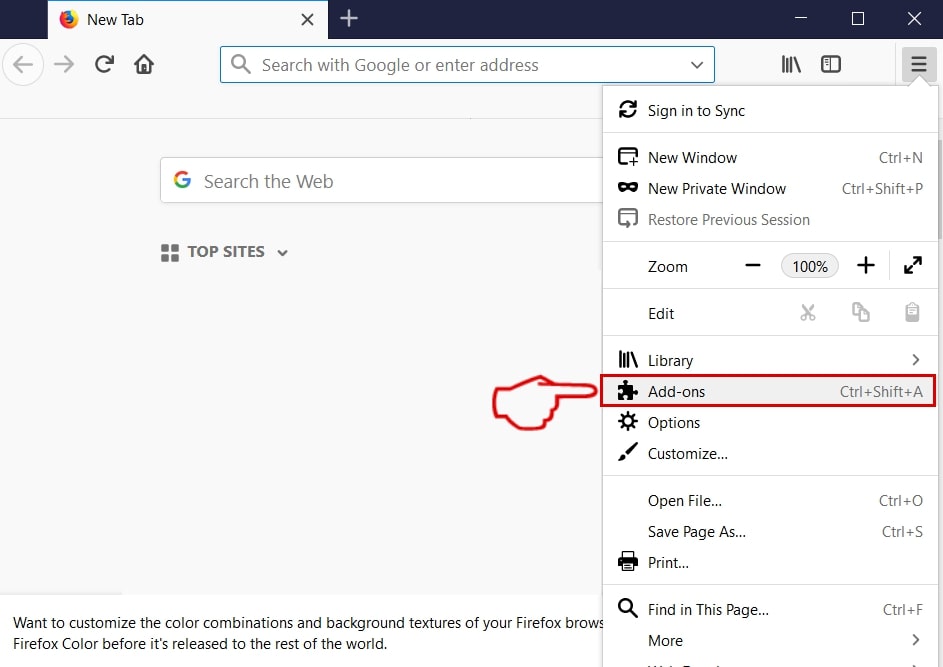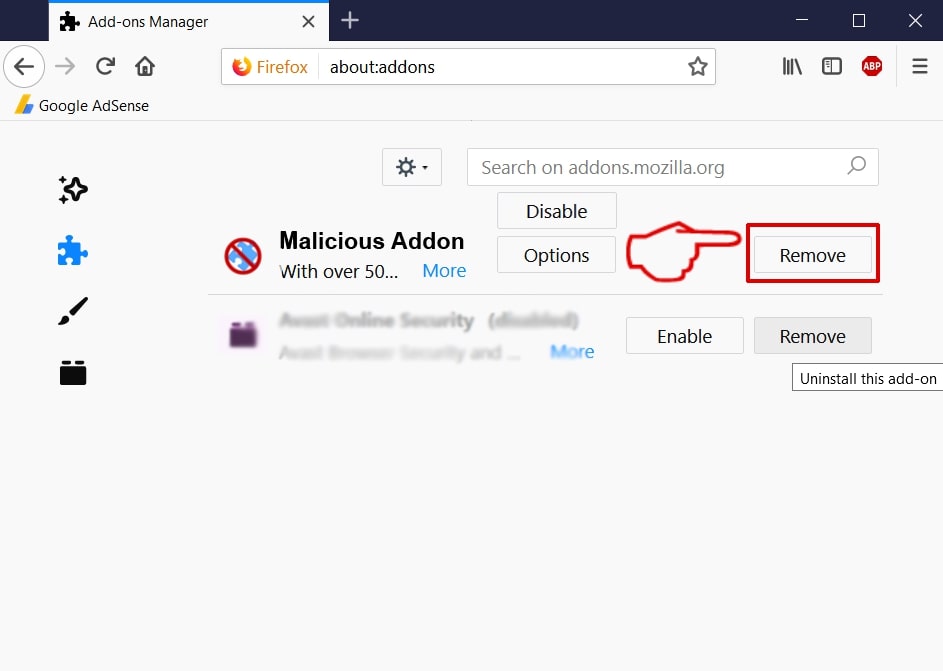What Is GeneralBox?
GeneralBox is an adware for Mac. Once it has been installed, it generates a lot of problems like the presentation of ads, alterations to the browser settings, and the collection of user data. This program is deemed adware and a “Mac virus”.
What Is Adware?
Adware, also known as advertisement-supported software, is a program created to make money for its creators by displaying ads on users’ computers or browsers. As this has become more common, users of both mobile and desktop devices have been affected. An example of this is GeneralBox, which particularly targets Mac users. This kind of software often gets mislabeled as a virus, even though it does not actually possess any virus-like features.
![GeneralBox Mac Adware Removal Guide [Solved]](https://cdn.sensorstechforum.com/wp-content/uploads/2023/04/GeneralBox-mac-remove-300x188.jpg)
GeneralBox – Details
| Name | GeneralBox |
| Type | Rogue App / PUP / Auto-Downlaod / Redirect for Mac |
| Short Description | Aims to modify the settings on your computer in order to get it to cause third-party software downloads and the displaying of different unwanted contents and ads. |
| Symptoms | Your Mac begins to display various types of content, which may even be malicious, which results in slowing down in terms of performance. Auto download of other PUPs may start. |
| Distribution Method | Via mail software. Fake Updates. Bundled downloads. Web pages which may advertise it. |
| Detection Tool |
See If Your Mac Has Been Affected by GeneralBox
Download
Malware Removal Tool
|
User Experience | Join Our Forum to Discuss GeneralBox. |
Why Do I See GeneralBox On My Mac?
Be wary when engaging with GeneralBox, as it could be unintentionally installed on a Mac computer. This program can reduce efficiency, so it is best to eliminate it quickly.
GeneralBox Virus – How Did I Get Infected
It is crucial to take the necessary steps to protect your device from the GeneralBox Virus, a dangerous program typically transmitted via malicious sites, software bundling, malvertising, scareware website, email add-ons, and such. Failure to do so can bring about considerable harm to your computer.
GeneralBox Mac – What Does It Do?
By forcing toolbars, ads, and more into your browser, GeneralBox can make your Mac sluggish and disjointed. This is with the goal of increasing the number of advertisements seen, which includes modifying your home page, new tab and default search engine.
- Highlighted text on the pages you visit.
- Interruptive banner ads.
- Redirects.
- pop-ups with video and/or sound.
- Changed search results to show ads instead of relevant sites.
- Intrusive and push notifications.
This app might use cookies , as well as other tracking objects, which could possibly collect a variety of data, including the possibility of personally personally identifiable.
- IP and Mac addresses.
- Your mouse movements.
- The browsing history from your browser.
- What searches you have made.
- Your bookmarked websites.
- What you have visited.
- Your mouse clicks.
- Different personally identifiable information you may type.
Is GeneralBox a Mac Virus?
Don’t muddle GeneralBox adware with a Mac virus despite the fact that it can be put on your computer without your approval. This kind of potentially unwanted program likely from the Adload versions and can slow down your Mac, though it is not inherently malicious.
Can It Be Dangerous?
If someone unwittingly or deliberately downloads Mac adware from GeneralBox, they can be in danger, as it can be used to track their activities, hoard private information, and potentially install malicious programs. Furthermore, it can take users to websites that do not have HTTPS or SSL security protocols, which can be detrimental.
- Survey sites that are fraud.
- Phishing pages.
- Rogue software download sites.
- Tech support fraud pages.
- URLs, containing a virus infection file or script.
- Web pages that contain scams.
- Redirects to dangerous sites via multiple pay-per-click redirects.
How to Protect Your Mac from GeneralBox?
Utilize our advice to bolster your shield against dangerous software, including this one.
- Make sure GeneralBox is fully removed using professional software.
- Change all your passwords from a safe device.
- Enable two-factor logins.
- Call your bank to change all credit card information if you use your Mac for online payments.
- Change your Wi-Fi password.
- Install a reputable anti-malware protection app on all your devices.
- Do not download apps from unknown sources.
How to Remove GeneralBox from Mac?
To keep the Mac from GeneralBox adware, utilize an anti-malware program. Maintaining the latest system software and applications, abstaining from clicking on suspicious links, and taking advantage of secure passwords can also aid in reducing the risk of malicious software threats.
Steps to Prepare Before Removal:
Before starting to follow the steps below, be advised that you should first do the following preparations:
- Backup your files in case the worst happens.
- Make sure to have a device with these instructions on standy.
- Arm yourself with patience.
- 1. Scan for Mac Malware
- 2. Uninstall Risky Apps
- 3. Clean Your Browsers
Step 1: Scan for and remove GeneralBox files from your Mac
When you are facing problems on your Mac as a result of unwanted scripts and programs such as GeneralBox, the recommended way of eliminating the threat is by using an anti-malware program. SpyHunter for Mac offers advanced security features along with other modules that will improve your Mac’s security and protect it in the future.

Quick and Easy Mac Malware Video Removal Guide
Bonus Step: How to Make Your Mac Run Faster?
Mac machines maintain probably the fastest operating system out there. Still, Macs do become slow and sluggish sometimes. The video guide below examines all of the possible problems that may lead to your Mac being slower than usual as well as all of the steps that can help you to speed up your Mac.
Step 2: Uninstall GeneralBox and remove related files and objects
1. Hit the ⇧+⌘+U keys to open Utilities. Another way is to click on “Go” and then click “Utilities”, like the image below shows:

2. Find Activity Monitor and double-click it:

3. In the Activity Monitor look for any suspicious processes, belonging or related to GeneralBox:


4. Click on the "Go" button again, but this time select Applications. Another way is with the ⇧+⌘+A buttons.
5. In the Applications menu, look for any suspicious app or an app with a name, similar or identical to GeneralBox. If you find it, right-click on the app and select “Move to Trash”.

6. Select Accounts, after which click on the Login Items preference. Your Mac will then show you a list of items that start automatically when you log in. Look for any suspicious apps identical or similar to GeneralBox. Check the app you want to stop from running automatically and then select on the Minus (“-“) icon to hide it.
7. Remove any leftover files that might be related to this threat manually by following the sub-steps below:
- Go to Finder.
- In the search bar type the name of the app that you want to remove.
- Above the search bar change the two drop down menus to “System Files” and “Are Included” so that you can see all of the files associated with the application you want to remove. Bear in mind that some of the files may not be related to the app so be very careful which files you delete.
- If all of the files are related, hold the ⌘+A buttons to select them and then drive them to “Trash”.
In case you cannot remove GeneralBox via Step 1 above:
In case you cannot find the virus files and objects in your Applications or other places we have shown above, you can manually look for them in the Libraries of your Mac. But before doing this, please read the disclaimer below:
1. Click on "Go" and Then "Go to Folder" as shown underneath:

2. Type in "/Library/LauchAgents/" and click Ok:

3. Delete all of the virus files that have similar or the same name as GeneralBox. If you believe there is no such file, do not delete anything.

You can repeat the same procedure with the following other Library directories:
→ ~/Library/LaunchAgents
/Library/LaunchDaemons
Tip: ~ is there on purpose, because it leads to more LaunchAgents.
Step 3: Remove GeneralBox – related extensions from Safari / Chrome / Firefox









GeneralBox-FAQ
What is GeneralBox on your Mac?
The GeneralBox threat is probably a potentially unwanted app. There is also a chance it could be related to Mac malware. If so, such apps tend to slow your Mac down significantly and display advertisements. They could also use cookies and other trackers to obtain browsing information from the installed web browsers on your Mac.
Can Macs Get Viruses?
Yes. As much as any other device, Apple computers do get malware. Apple devices may not be a frequent target by malware authors, but rest assured that almost all of the Apple devices can become infected with a threat.
What Types of Mac Threats Are There?
According to most malware researchers and cyber-security experts, the types of threats that can currently infect your Mac can be rogue antivirus programs, adware or hijackers (PUPs), Trojan horses, ransomware and crypto-miner malware.
What To Do If I Have a Mac Virus, Like GeneralBox?
Do not panic! You can easily get rid of most Mac threats by firstly isolating them and then removing them. One recommended way to do that is by using a reputable malware removal software that can take care of the removal automatically for you.
There are many Mac anti-malware apps out there that you can choose from. SpyHunter for Mac is one of the reccomended Mac anti-malware apps, that can scan for free and detect any viruses. This saves time for manual removal that you would otherwise have to do.
How to Secure My Data from GeneralBox?
With few simple actions. First and foremost, it is imperative that you follow these steps:
Step 1: Find a safe computer and connect it to another network, not the one that your Mac was infected in.
Step 2: Change all of your passwords, starting from your e-mail passwords.
Step 3: Enable two-factor authentication for protection of your important accounts.
Step 4: Call your bank to change your credit card details (secret code, etc.) if you have saved your credit card for online shopping or have done online activiites with your card.
Step 5: Make sure to call your ISP (Internet provider or carrier) and ask them to change your IP address.
Step 6: Change your Wi-Fi password.
Step 7: (Optional): Make sure to scan all of the devices connected to your network for viruses and repeat these steps for them if they are affected.
Step 8: Install anti-malware software with real-time protection on every device you have.
Step 9: Try not to download software from sites you know nothing about and stay away from low-reputation websites in general.
If you follow these reccomendations, your network and Apple devices will become significantly more safe against any threats or information invasive software and be virus free and protected in the future too.
More tips you can find on our MacOS Virus section, where you can also ask any questions and comment about your Mac problems.
About the GeneralBox Research
The content we publish on SensorsTechForum.com, this GeneralBox how-to removal guide included, is the outcome of extensive research, hard work and our team’s devotion to help you remove the specific macOS issue.
How did we conduct the research on GeneralBox?
Please note that our research is based on an independent investigation. We are in contact with independent security researchers, thanks to which we receive daily updates on the latest malware definitions, including the various types of Mac threats, especially adware and potentially unwanted apps (PUAs).
Furthermore, the research behind the GeneralBox threat is backed with VirusTotal.
To better understand the threat posed by Mac malware, please refer to the following articles which provide knowledgeable details.


